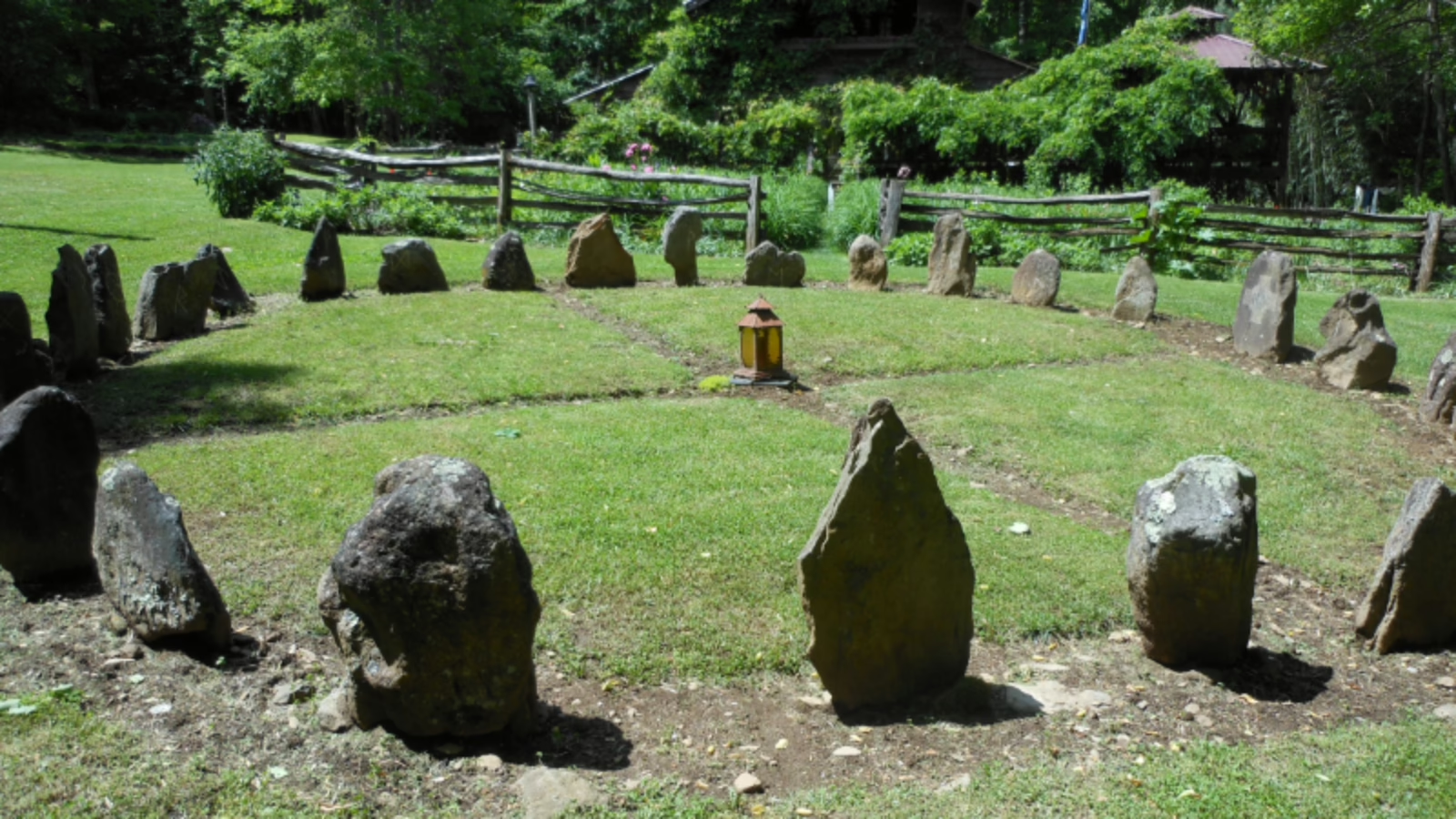Table of Contents
In Druidry and Pagan mysticism, the concepts of sacred space and sacred place are living realities. These ideas serve as bridges between the physical and spiritual worlds, grounding mystical practice in both landscape and intention. Understanding the role of sacred space and place in Druidry opens a path to spiritual embodiment, ecological reverence, and inner transformation.
Sacred Space
A sacred space is any space, whether physical, psychic, or symbolic, that is set apart from ordinary experience through intention, ritual, and spiritual presence. It is created, not found. Sacred space is where the veil thins, where we can listen to the whispers of the ancestors, commune with the spirits of the land, and open our inner eyes to the divine forces that shape our lives. In the Druidic tradition, creating a sacred space may involve casting a circle, invoking the four directions, or honoring the elements of earth, air, fire, and water. Or it may just consist of closing your eyes in a quiet place and imagining yourself in a sacred sanctuary of the mind. The space becomes a microcosm of the cosmos that is a living altar, echoing the harmony of all that is.
Sacred Place
By contrast, a sacred place is a location already imbued with power. These are the groves, springs, hilltops, and stones that stir something deep within us when we arrive. Sacred places are often naturally occurring, although they may also be enhanced by generations of human reverence. Stonehenge, Glastonbury Tor, and Tara in Ireland are famous examples, but so too are the quiet places that call to us personally. It could be a patch of forest we walked as children, a riverside we return to when in need of peace, or a forgotten cairn covered in moss. In Druidry, these sacred places are not just symbolic. They are conscious. They speak to those who know how to listen.
Together, sacred space and sacred place create the container in which Druidic and Pagan mysticism unfolds. One is created by intention, the other discovered by awareness. One prepares the inner temple, the other awakens the outer world. Both are necessary for a full spiritual life grounded in the living earth. When we step into a sacred space within a sacred place, such as a ritual circle set among ancient oaks, we are standing in alignment with the universe. Time slows. The soul listens. The divine speaks.
Druidry and Sacred Space

In the Druidic path, the creation of sacred space is both a daily practice and a lifelong discipline. Lighting a candle with intention, walking a labyrinth, or quietly greeting the sunrise with a cup of tea in hand are all ways to sanctify the moment. They turn the mundane into the magical. Over time, this practice trains the mind and heart to become more attuned to the sacred in all things. Eventually, the line between sacred space and ordinary space begins to blur. We begin to walk in the world as if every place is a temple, every act a ritual, every tree a witness.
Pagan Mysticism and Sacred Space
Pagan mysticism extends this idea even further. It teaches that the divine is immanent in nature and not apart from it, but alive within it. The wind carries the breath of the gods; the stones remember; the animals teach. Sacred place is not limited to a few renowned locations but exists everywhere. The key is reverent attention. What makes a place sacred is not fame or history, but relationship. When we approach the land with offerings, prayers, and presence, the place responds. We co-create sacredness through our reverence and our respect.
This reciprocity is central to the Druidic understanding of place. The land is not a backdrop to spiritual life. It is an active participant. To walk the Druid path is to become part of the land’s story, not merely a visitor. By returning again and again to a chosen spot like a grove, a cliff, a spring, we forge a bond that deepens over time. The place remembers us, just as we remember it. This relationship becomes a wellspring of wisdom, healing, and power.
In our modern world, where so many are uprooted and disenchanted with our current systems and ways of living, reclaiming sacred space and sacred place is a radical act. It is a way of restoring intimacy with the land and re-enchanting the ordinary. Whether we live in cities, suburbs, or wild forests, we can create altars, find hidden corners of peace, and walk with reverence. Druidry teaches that the sacred is always near, waiting not to be discovered, but to be remembered.
